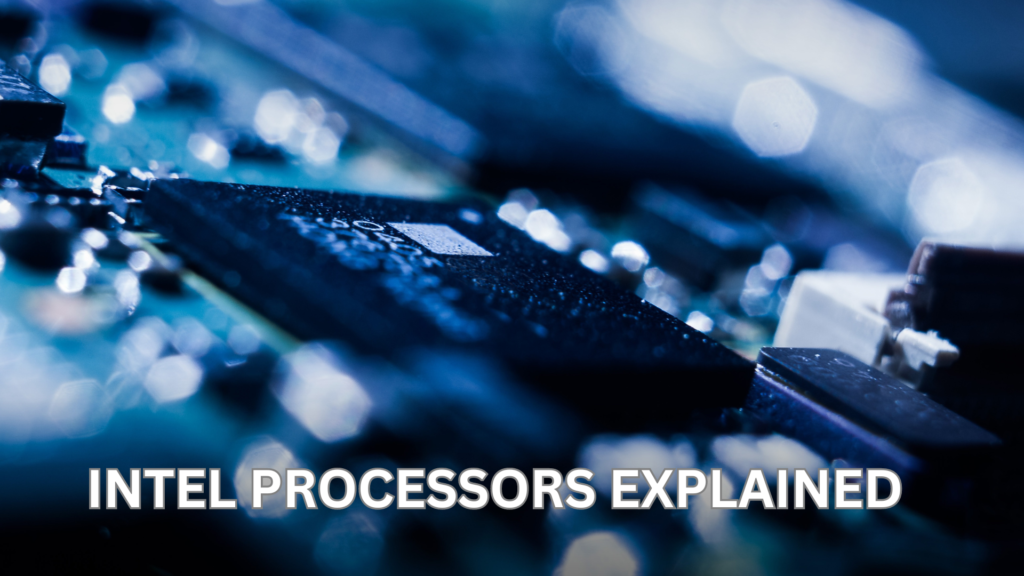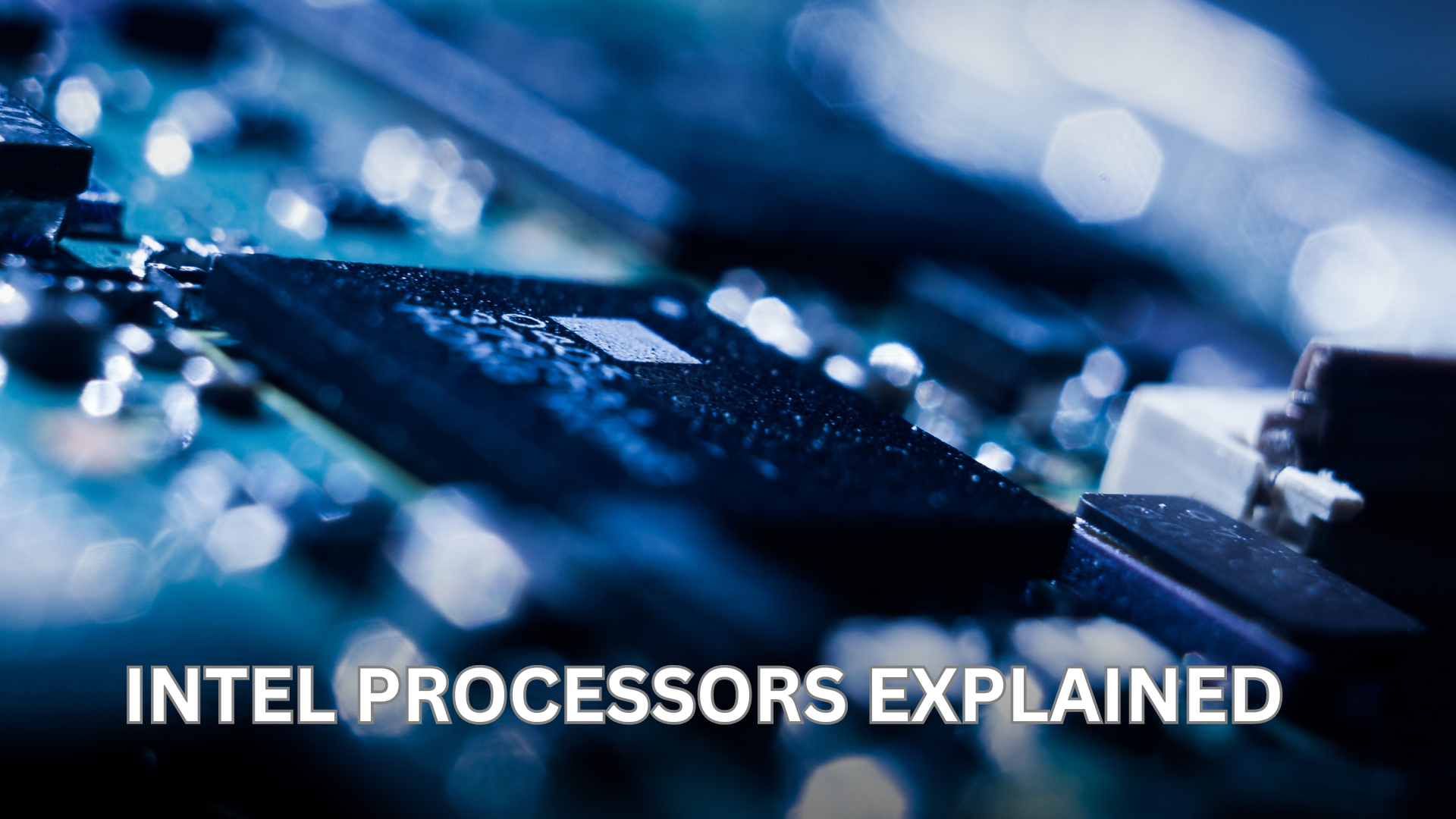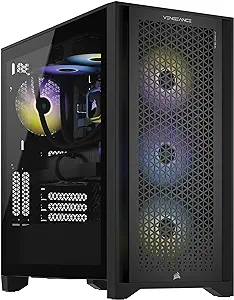A Clear Breakdown of All Intel Processors Explained: Cutting Through the Complexity

“I don’t know about you guys but I really miss the good old days. When you could walk into a tech store and buy an Intel processors and intuitively know that what you’re getting is right for you. After all a Pentium 3 was faster and better than a Pentium 2 and a Pentium 4 was faster and better than a three . It was really linear and easy to understand fast forward to today it’s way more convoluted and complex.
There are so many different types of Intel processors and generations that it’s just not always obvious with that said I’ve taken all that information into this super helpful and concise post which will hopefully help you understand the difference between each of these processors. Let’s get right into it to keep things easy to understand.
I’m gonna start with a linear approach where we go with the lowest profile processor and gradually make our way to the top tier stuff.
Celeron Processor
At the very bottom, we have Intel’s Celeron Processor now. This is designed only for the most primitive of use cases such as web surfing so maybe it’s Amazon shopping online banking checking the news and occasionally watching some videos on the internet those kinds of use cases are adequate. These processors with their low core count and slow clock speeds can’t handle much more than that I think most of consumers they should avoid Celeron processors as though their 150 USD or lower price point might be lucrative they just don’t have a good price to Performance ratio. If performance is not an issue for you, then you can also check out more Celeron processors.
Pentium Processor
Next in line, we have Intel’s Pentium processor a while no longer considered the PowerHouse it was in the early 2000s it’s still around in kicking just like the Celeron depending use case is pretty simple but thanks to the slightly higher core count ranging between 4 to 6 and slightly higher clock speed it’s able to handle more robust applications like Microsoft Word and Excel and it can also do slightly better handling of web activities that might need more well power such as watching full HD content on YouTube without lagging or providing a choppy experience if you are on the budget side of things a Pentium processor is a decent proposition as they usually range between 150 to 300 USD in price and it can sometimes be even lower than that and they have a considerably better performance or Price ratio when compared to the weaker Celeron processors
Moving up we quickly come into the mainstream series of Intel also known as your Core Series and the most prominent models you hear about include Core I3 I5 i7 and I9
INTEL Core I3
Now starting with core I3 this is kind of the every everyday high efficiency processor by Intel so just like Intel Pentium it’s able to handle day-to-day tasks with relative ease whether it’s web browsing or having word processing applications or number crunching a Microsoft Excel for example or while viewing PDFs however it has the added benefit of being able to multitask in a far greater capacity so it can easily have multiple Excel sheets open at the same time or be running multiple tabs with multiple videos playing and it does not struggle in the slightest the key difference here is that it can have up to eight cores depending on which model the I3 processor you get with slightly higher clock speeds overall the I3 is definitely a visible Step Up compared to Pentium and any processor beneath it however its price range kind of varies between 300 to 450 USD sometimes a little bit more a little bit less so its value proposition is kind of subjective to your use case but it’s not that common anyway so the next level up might be better better for you
INTEL Core I5
Next up we have arguably the most popular mid-range mainstream processor Intel’s Core i5 the reason this processor is so popular is because it has the perfect balance between efficiency and power so it can do all the activities you could do with the lower end processors however it can handle more demanding activities like gaming photo or video editing it can easily stream 4K content and do all the other light tasks I mentioned and because depending on which model you get it has up to 14 distinct core counts it’s capable of some pretty high-end multitasking you can have multiple windows and applications open at the same time and it does not break a sweat the I5 is the perfect processor for about 80 percent of all consumers in my opinion it has just the right amount of power to again give you what you need at the right moment it’s worth noting .If processors have a pretty crazy price range ranging anywhere from as little as to around 500 US dollars to as much as 900 US Dollars on average sometimes more sometimes less because well they come in tons of configurations and different types of laptop and desktops as a result they’re kind of all over the place it’s definitely harder to shop for a good deal because well an i5 can be similar in performance across various price ranges but again this speaks to the versatility of this chip and definitely is a great midpoint.
INTEL Core I7
Now we’re getting in the big leaks next up is Intel’s core i7 chip this is a far more aggressive processor in nature that’s designed for high-end performance whether it comes in the form of playing the latest gaming titles at higher settings or perhaps doing complex coding or 3D animation or perhaps you’re doing multi-layer 4K video editing or you’re doing really intense photo editing those are the kind of activities the i7 thrives in its core count being as high as up to 20 distinct cores depending on the model means it capable of robust multitasking and crunching a lot of information very quickly now of course the compromise here often comes in efficiency i7 processors don’t necessarily have as much life as low-rand processors might because they’re using a lot more power but they have gotten pretty efficient over the years themselves as well however I think the i7 is really only good for anyone who does tap into a lot of heavy end Computing through these activities or other activities that might be demanding on your PC of course keep in mind that i7 processors do tend to get fairly expensive ranging with prices between 900 to as much as 2 000 USD sometimes even higher depending on how much RAM you get or if you get a GPU or not but again i7 is really only truly realized for people who have that kind of a use case
INTEL Core I9
Now we get to the very top of on all the Intel Core I9 chip this thing has up to 24 distinct processing cores it’s designed only for the most insane of workflows whether that comes in the form of playing the latest gaming titles at the highest possible setting or perhaps doing super complex development work or programming or perhaps you’re doing professional animation or 3D animation for a studio or perhaps you’re trying to crunch as much data as possible as quickly as possible or even for stuff like 8K video editing nonetheless the I9 chip is designed for extreme cases and if your use case is going to be watching Granny’s YouTube videos on how to cook a pie well it’s going to be of no benefit to you you really have to push this processor to its limits to see what it’s capable of now with that said also keep in mind and I9 chip is only available on a handful of pre-built desktops and laptops that usually start no lower than around 2500 US Dollars and can go up to two to three times higher in cost depending on the RAM and GPU and other parts that you get along with it and I9 chips should only be bought by people who have an extreme use case I would say less than five percent of people would truly benefit from it otherwise a i7 or I5 chip is a far more suitable replacement compared to a I9 processor
Alright let’s take a breath of relief that was a lot of information however hopefully by this point you’re feeling far more confident about which kind of processor you might need for your personal use case now keep in mind I did remove a lot of technicalities to keep this post as simple as possible
Some Technicalities
For example not all I5 or i7 chips are the same there are different generations with each generation being a little bit faster than the previous one there are also your one series devil chips Within These subclasses you are efficient chips with h being power hungry or power effective chips and P being somewhere in between but the guiding principles I did mention with each processor remain very much static and should serve as a good anchor as to which processor is right for you
Final thoughts
So let me know which processor you’re most likely to get in the comment section below and if you have any more questions if you want to read more about Intel processors or perhaps you’ll learn about AMD processors in a similar capacity let me know in the comment section below I can look into making a blog on that stuff




